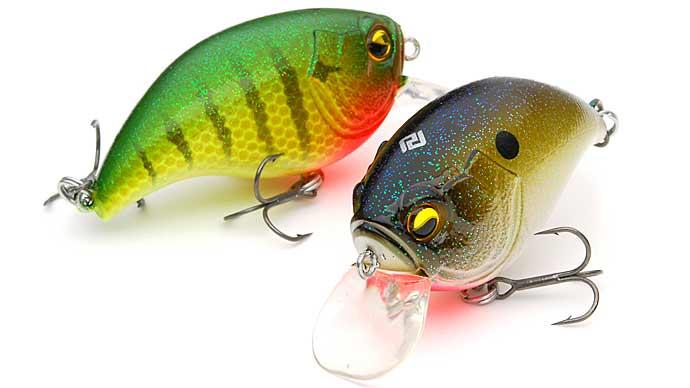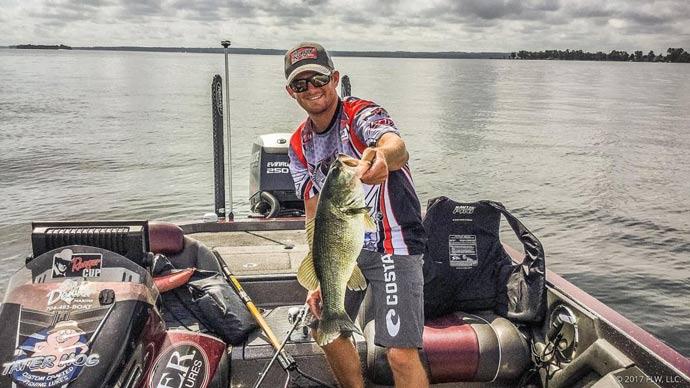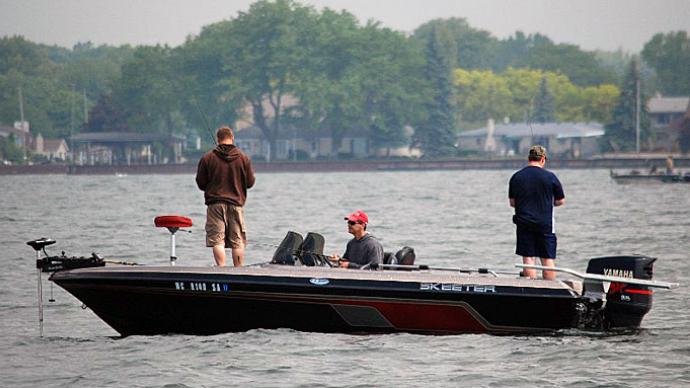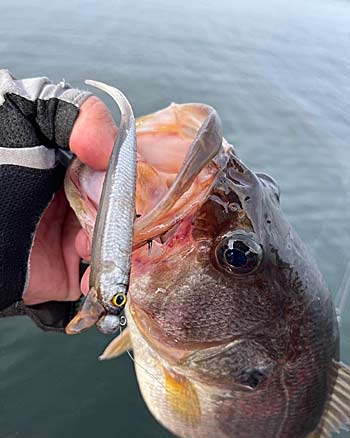
Every once in a while, a new way of fishing emerges, and you can’t escape it. That’s what is happening now with those anglers fishing with a jighead and minnow-style soft plastic bait. This way of fishing is familiar, as anglers have been using this for many years for many different species. Still, it's hit the mainstream after dominating almost every professional tournament in recent memory, thanks to the advancement of forward-facing sonar.
These are undoubtedly the hottest techniques in bass fishing, and you can get in on the action right now.
What’s It Called?
While this technique is everywhere, anglers call it various names, and they all fit this category. This technique has many names, including the "Damiki Rig,” “tightening,” “moping,” “mid-strolling,” “hover strolling,” and more. No matter what you call it, the gist is fishing a fluke-style bait on a jighead and fishing it in the middle of the water column for suspended bass, adjusting the depth based on where the fish are swimming.
These techniques are perfect for forward-facing sonar, as you can place the bait at virtually any depth with the right cast. While it's tailor-made for this new technology, it's not required. You can shake and fish a suspended bait along bluff walls, deep points, bridge pilings, and more and catch fish without using your electronics, but it helps to couple it with forward-facing sonar.
How and Where To Do It
There are several ways to fish the bait, but a steady rod shaking during the retrieve will get the lure to dart side-to-side and roll like an injured baitfish. Many fish it with different retrieves and mix it up based on the fish's mood. One of the most important things is getting the bait in front of a fish and keeping it above the fish, as they are generally much more likely to rise to a bait than to chase a lure down to the depths as it zips by them.
Experimentation is also critical as each fish has a different "personality"; some are more willing to chase, and some need to be tempted. It can sometimes become a cat-and-mouse game, but there is no better way to present a lure to a fish suspended in the water column.
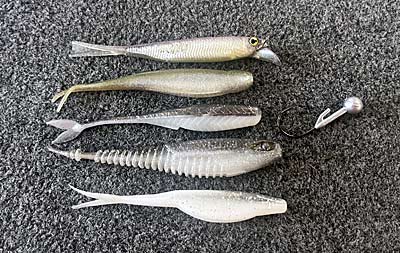
While it's still a new way for many to target bass, and we are all still learning about its potential, there are some situations when these techniques excel. The biggest key is finding times when bass are suspended in the water column and not holding tight to cover, although the baits will also draw fish from the cover.
It’s an exceptional technique for the winter months when bass are in deeper water and chasing schools of baitfish, but it works just as well in the summer months when the bass are offshore. If using your forward-facing sonar, look for bass suspended around baitfish and try this technique.
Baits and Gear
A host of different baits will work for the technique, and anglers generally have personal favorites based on their brand preferences. A standard Zoom Fluke will work fine, but now, baits are specially designed to have more action during the retrieve.

This technique was popularized in Japan and has now made it here, and not surprisingly, some tremendous Japanese soft plastics are perfect for the method. The Deps Sakamata Shad was built to give the bait more rolling action during the retrieve, and the Jackall Drift Fry does the same and adds more action to a simple baitfish imitating soft plastic.
The same is true of jigheads, and a basic round head will work just fine, but there are also specialized jigheads like the Owner Range Roller, which adds more of the rolling action to the bait. One significant consideration is choosing the right-sized jighead. Most who use the fishing technique will often mix it up with several different weights and match the conditions and how deep the fish are sitting in the water column.
Some days, the bass, like a slower falling bait and using a lightweight 1/16-ounce head, will get that free-falling action of a dying baitfish. Other times, it's vital to have a heavier weight to reach deeper depths, and it may require as heavy as a 3/8-ounce head to get deep quickly or when faced with windy conditions.
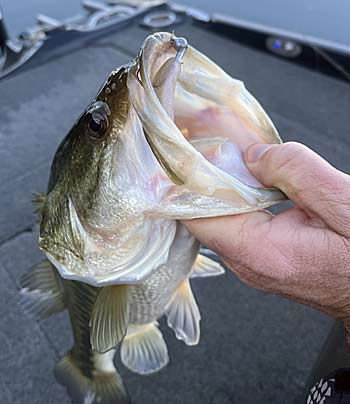
This is a finesse technique, and spinning gear is a must. A medium light rod works well for this style of fishing. The rod's lighter power helps fling a small bait a long distance, and the rod also helps shake a bait and give the bait great movement in the water. Pair it with your favorite spinning rod and a braid to fluorocarbon leader, and you are ready to go. High visibility braid like Seaguar Smackdown in Flash Green helps to detect light bites and, paired with a Gold Label fluorocarbon leader, will give you the best of both worlds.
Another consideration is your line pound test, and it pays to go as light as possible as thinner diameters allow the bait to fall quicker and get a more natural action. As it falls, the bow in the braid can also affect how well the lure performs. An excellent place to start is with a 10-pound braid and leader of a 6 or 8-pound test.
If you haven’t already, you will surely hear quite a bit about this way of fishing. It’s the hottest trend in tournament bass fishing and shows no signs of slowing down. Grab a jighead and minnow bait and get in on the action.

